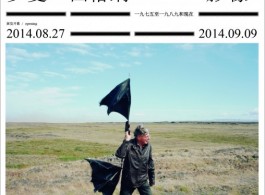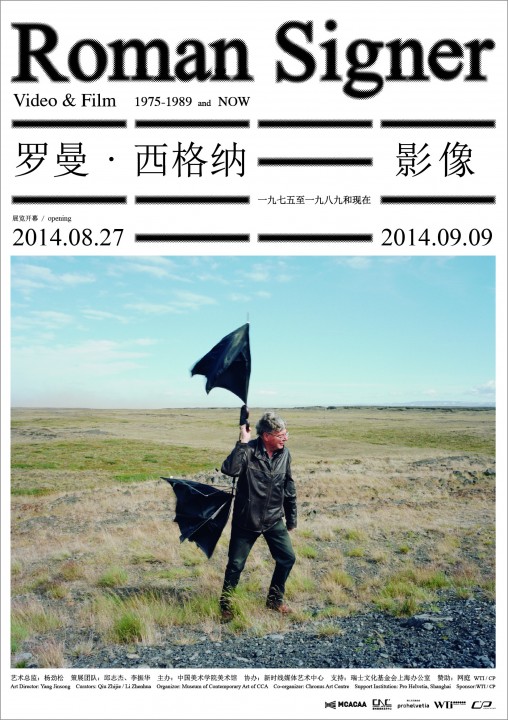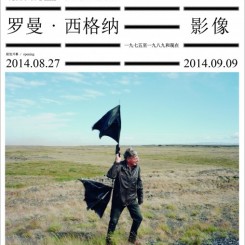Roman Signer
Videos and Films
1975-1989 and NOW
The work of artist Roman Signer was first introduced to Chinese art academies towards the end of the 1980s, and soon gained broad recognition. His artworks employ various media, including gun powder, sand, water and time. At Documenta 8 (1987), his notion of sculpting time reached its peak in the presentation of Action with Sheets of Paper. Aside from temporal sculpture, his work has focused, since the 1970s, on the artist’s personal involvement with time and physical movement, on material transformation under pressure, as well as on personal expressions of memories and pain. When he gave up drifting in a canoe, perhaps because of a close friend’s death, he applied the canoe motif in many uncommon settings: the canoe is dragged on the ground, is thrown out from a flying jet, and is placed in many other similarly strange moments and contexts. He cycles slowly, slowly in his artworks. Perhaps his departure on a bicycle and the frequent appearances of the canoe, together depict the departure of humans, and the absurdity of objects.
Roman Signer’s work is presented through videos and other kinds of documentation. He can be seen as passing on the spirit which originated in video art, Fluxus and Dada. In addition, born in Appenzell and now living in the small Swiss town of St. Gallen, Signer inevitably lives a hermit-like life, with a self-derived worldview and value system, and artistic techniques that he continues to develop. In 1981, following the current of left-wing romanticism and liberalism, Signer visited China. This trip was frozen in time via a single photograph. When he came to China the second time, in the booming period of China’s new economy and art market, he was already over 70 years old.
Video and film are Signer’s most frequently used artistic media. The time period 1975 to 1989 witnessed the birth and death of a sort of ‘media age’. Signer mostly used a Super8 (8mm film) camera in his works during this period. The length and quality of the works he produced back then were, in part, due to specific technological limitations, especially in film technology. Because no individual recording systems were used, Signer’s film works empowered themselves with pure silence. Unlike a lot of artists who rely too heavily on media techniques, Signer attempts to find himself a free balance between media intervention and naturally occurring events, and to present mundane daily life through extremely simplistic methods. For instance, most of his works were created without audiences on site, only him and his camera assistants (his brother, friends, and later his wife).
Roman Signer’s artistic practices also echo the left-wing thinking that later led to his visit to China in 1981, as well as the photo taken in Beijing. Today, six international galleries act as agents for his work. However, Signer’s working methods and the forms of media he uses have never changed, despite his growing reputation. He still uses simplistic media and materials, staying committed to the pleasure of being fully involved in the making process.
The introduction of Signer’s work to China starts with investigations of his artworks. Through this exhibition, the curatorial team hopes to share with the public Signer’s memories, formerly boxed and preserved in archives and databases. Signer has never been a fan of large-scale events and artworks, and he intentionally avoids talking about himself. At Documenta 8, when he was in the art world limelight, he may have felt the level of attention was too much. Roman Signer is an artist who always contemplates on his relation to the world, and who always lives with self-reflections. He existed, in the sense that his artworks and their sizes are deeply related to the world; yet he never exists, in the sense that none of his artworks are presented in real time in front of an audience. He even deliberately wipes away traces of his, or his artworks’ connection to the world, and stays alone, stays in an individual state of being. This kind of ‘disconnection’ does not cause blunt fractures, but instead, it is a dissolving process into daily life. It is clear that Signer’s work has never changed due to shifting politics, economics and even time. He maintains simple methods of expressing his understanding of the world, re-discovering the world through materialised forms and through experiments with the spiritual and material.
Roman Signer’s first touring exhibition to China is kindly supported by Museum of Contemporary Art of CAA, CAFA Art Museum, Wti, Chronus Art Center, QianNiao. Special thanks go to Mr. Yang Jingsong, Mr. Qiu Zhijie and my collaborator Mr. ZhangQinghong for their generous support.
Roman Signer’s first touring exhibition to China is co-curated by Qiu Zhijie and Li Zhenhua. The exhibition is also supported by: documenta Archiv Kassel, Helmhaus, Swiss Arts Council, Chronus Art Center, etc. Generous support also come from Corinne Schatz,David Signer,Karin Stengel,Simon Maurer,Barbara Signer,Michael Bodenmann,Uli Sigg,Josef Felix Müller,Peter Zimmerman,Reto Thüring,Rachel Withers,Max Wechsler.
Publication and copyright support come from Vexer Verlag, graphic design is provided by Yu Qiongjie with Transwhite Studio, translation and copy-editing is provided by Eva Luedi, Wang Pan, Iris Xinru Long and Susannah Worth.
*Roman Signer was born in 1938, in Appenzell, Switzerland. Appenzell (or Appenzellerland) is a town in the northeast of Switzerland, it is also the capital of the Canton of Appenzell Innerrhoden. Appenzell is a town with many historical architectures. the Parish Church, the 1563 Town Hall, the Salesis house, the ruins of Castle Clanx and the state archives with the administration building are listed as heritage sites of national significance. In 1071 the town was referred to as Abbacella. By 1223 this changed to Abbatiscella, meaning the Abbot’s cell.
Roman Signer
Videos and Films
1975-1989 and NOW
MUSEUM OF CONTEMPORARY ART OF CCA
EXHIBITION DATE: AUGUST 27 – SEPTEMBER 9
OPENING: AUGUST 27 *10am
CAFA ART MUSEUM
EXHIBITION DATE: OCTOBER 24 – NOVEMBER 25
OPENING: OCTOBER 24
ORGANIZERS
MUSEUM OF CONTEMPORARY ART OF CCA
CAFA ART MUSEUM
CO-ORGANIZER
CHRONUS ART CENTRE
SUPPORT INSTITUTION
PRO HELVETIA, SHANGHAI
© 2014-2024 by Li Zhenhua & Early Bird



